What is Decentralized Finance (DeFi)?
One of the most growing sectors in crypto space during 2021’s bull run is decentralized finance or known as DeFi. Decentralized finance is a new financial system which is built on the safe distributed networks, the similar technology that is used by cryptocurrencies. DeFi has altered the traditional finance system and created new opportunities from the usage of digital assets.
Back in 2021 DeFi is rapidly gaining traction and is anticipated to be the financial industry’s future. However, what is DeFi exactly? And how can this decentralized finance systems impact the future of financial systems?
Introduction
In order to access financial products and services such as savings, loans, insurance and the stocks, one typically has to rely on a centralized financial institution or have a bank account. This means that the majority of financial products and services are still managed by centralized systems. However, what if blockchain technology gave investors the ability to decentralize the whole financial system rather than just allowing investors to only send and receive cryptocurrencies?
This is exactly the case why DeFi threatens this centralized financial system by giving people access to peer-to-peer and open-decentralized digital trades.
DeFi is an ecosystem of financial applications built on the distributed and decentralized nature of blockchain network technology. DeFi eliminates intermediaries, thus enabling individuals, businesses and merchants to initiate financial transactions through new distributed technologies. DeFi makes use of connection, software, hardware, security protocols, and peer-to-peer financial networks. DeFi using connectivity, software, hardware, and security protocols through the peer-to-peer financial networks.
The invention of the Ethereum blockchain’s smart contracts kickstarted various DeFi protocols. The Ethereum blockchain’s smart contracts enable more advanced levels of programming which allows developers to experiment with their code and build applications known as decentralized applications (DApps). DeFi itself is a collection of DApps which focuses on the development of decentralized financial applications.
How Does DeFi Work?
The core components of DeFi to operators are trustless, security, and transparency. After all, The usage of DeFi expands the utility of blockchain networks from straightforward transfer to more complex financial use cases. In DeFi, all transaction operations were carried out by codes written in smart contracts instead of relying on centralized institutions like banks to act as intermediates.
Investors can perform financial actions such as lends, borrows, trades and investments using smart contract protocols that records and validates financial transactions in decentralized financial networks from anywhere using only internet connection. In DeFi, peer-to-peer lending can fulfill investors’ financial needs by matching each investor with an algorithm that brings together investors who will borrow funds with investors who will save their funds.
To put it simply, DeFi allows investors to interact with each other to satisfy their financial needs, using coded algorithms in smart contract protocols that run on the blockchain networks.
Centralized Finance:
Investor ->> Intermediaries (banks, brokers, etc) ->> Custodian ->> Financial instruments
Decentralized Finance:
Investor ->> DeFi protocols <<- Investors
DeFi Growth
The total locked value (TVL) of all DeFi protocols reach $49,63 billion in 2023. In fact before 2019 DeFi TVL not even reach $1 million. The highest TVL until today was at the end of 2021 which was around $180 billion. It is very possible the TVL of all DeFi protocols will return to its peak value if DeFi utilities become more popular.
Decentralized Finance Use Cases So Far
1. Lending and borrowing funds
DeFi borrows and lends are the popular types of protocols in DeFi space. Lending and borrowing on the decentralized systems may have many benefits compared to the lending and borrowing on the traditional finance systems. This includes near instant transactions, executions and settlements, depending on the blockchain processing speed. Skipping the credit checks requirements and using only crypto assets as collateral.
Prominent lending and borrowing DeFi protocols are AAVE, Compound and Venus protocol.
2. Decentralized Exchange
Decentralized exchanges (DEXs) are applications that allow the trade of one token for another using smart contracts. Smart contracts facilitate the trades made directly between user wallets. These applications enable users to trade digital assets directly through the user’s wallet without requirements to deposit funds in the first place like how centralized exchanges work.
Prominent Dexes protocols are Uniswap, Curve and Pancakeswap.
3. Yield Optimization and Assets Management
Yield optimization or yield farming is the process of using DeFi applications to automate and maximize the returns earned from staking, rewards pools, and other interest-bearing products. The yield optimization protocols accept user deposits of assets, and apply different strategies to produce yield returns on the deposited assets.
Prominent Yield optimization and assets managements are Convex, Yearn Finance, Balancer and Lido Finance
How to Start Using DeFi
1. Investors must have a Web3 wallet to interact with Ethereum DApps or other blockchain DApps. For example are Metamask and Trust Wallet
2. The Web3 wallet must have funds to approve transactions within the DeFi protocols. When using Ethereum chain, investors need ETH token, when using Solana chain, investors need SOL token. The crypto funds required is differ for each blockchain the investors interact with
3. Investors access the protocol’s website with their Web3 wallet browser. Investor also need to learn the protocol guidelines and tutorial before made transactions on the chosen protocols
DeFi VS TradFi
| Decentralized Finance (DeFi) | Traditional Finance (TradFi) |
| Anyone can access, banked or unbanked | Requires bank account |
| No registration, KYC and credit checks to interact with the protocols | Requires registration, KYC and credit checks to access specific services |
| Open database and open-source protocols code | Private database and private providers software |
| No regulation | Regulated |
| Protocol’s bugs and hacks threat | Provider human-error |
| Peer-to-peer liquidity or financial products | Centralized liquidity |
| Anyone can develop their own finance protocols | Financial services audited by government or independent auditor |
DeFi Advantages
| Eliminates any intermediaries or arbitrator to access financial services |
| Transparent data record and immutable on the blockchain networks |
| Open ecosystem, anyone can join any DeFi protocols services with the need of KYC or credit checks |
| Ease of access with Web3 wallet which only require internet connection and accessible anywhere |
| Low cost and low fees compared to traditional finance services |
| Autonomous, lot of DeFi protocols are operated automatically with certain algorithms |
| DeFi protocols are not subject to adversity or bankruptcy, no human-error within the protocol’s algorithm |
| Constant innovation and upgrades |
DeFi Challenges
| Blockchain’s poor performance, especially when the demands are high |
| Learning Web3 wallet and DeFi capabilities can be challenging at first |
| High user errors, crypto assets tend to lost more on human error than software errors |
| Hard to find stable and suitable protocols for each users |
| Counterparty risk, especially to lenders if borrowers fails to repay their debts |
| Protocols bugs and hacks |
| Impermanent loss, sometimes DeFi yield can be lower than certain crypto asset’s performance |
Closing
Decentralized finance (DeFi) is a developing financial technology that poses a threat to the current centralized banking system. DeFi encourages the usage of peer-to-peer, or P2P, transactions by eliminating the fees that banks and other financial institutions charge for using their services. The goal of decentralized finance is to create financial services that are independent from existing financial structures, a more open financial system which avoids censorship and financial surveillance.
Financial inclusion and the conditions that allow everyone to have access to financial products or services, is essentially why DeFi applications are invented. If successful, DeFi might take over control from large organizations to the individual and the open-source community. Once DeFi is prepared for its mainstream and widespread use, then it will be decided.






